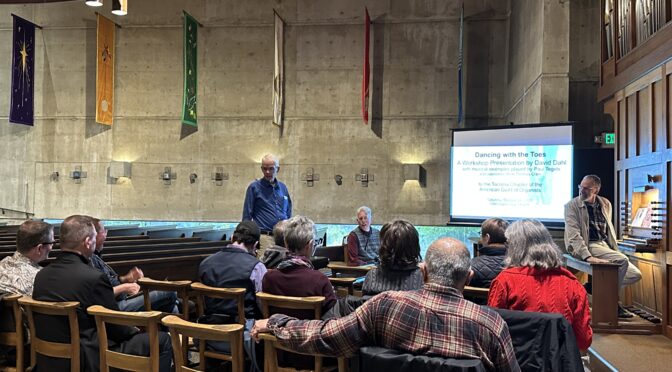Historical Perspective
A century ago, it is very likely that a beginning organ student would have studied J. S. Bach’s Eight Little Preludes and Fugues. After all, they were probably written as instructional pieces. It is also likely that the teacher would have taught the student to play legato using these pieces–leaving no space between notes in the manuals nor the pedal and producing as smooth a sound as possible. But there is something wrong with this picture–several things, in fact. First, the pieces were almost certainly not written by J. S. Bach. Musicology research favors one of his students or sons. Second, while the ultra-legato might have been appropriate for the dismal organs being built at the time, both were to undergo dramatic transformations in the near future. Tacoma AGO member David Dahl was at the forefront of the revolution, both in performance practice and organ building.
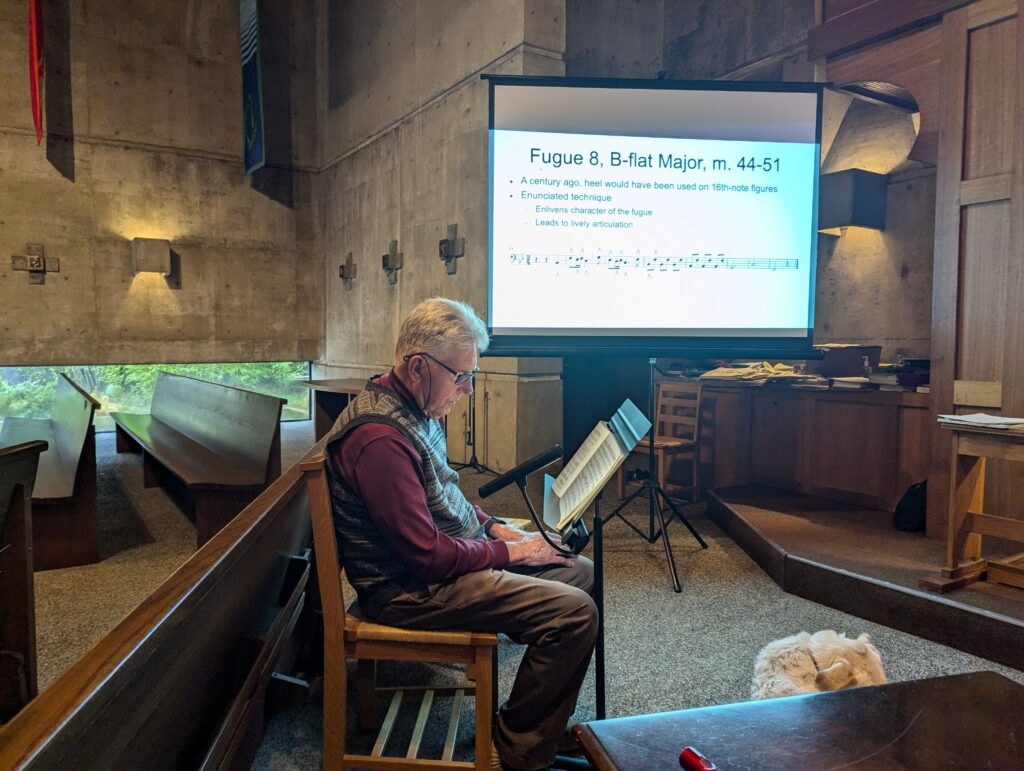
On Saturday morning, October 26, 2024, David Dahl shared his wisdom and experience with the Tacoma Chapter of the American Guild of Organists (AGO) gathered at Christ Episcopal Church for a program entitled “Dancing with the Toes.” The workshop explored the artistry of pedal technique and historical interpretation, with organist Paul Tegels demonstrating musical examples on the church’s exquisite John Brombaugh organ.
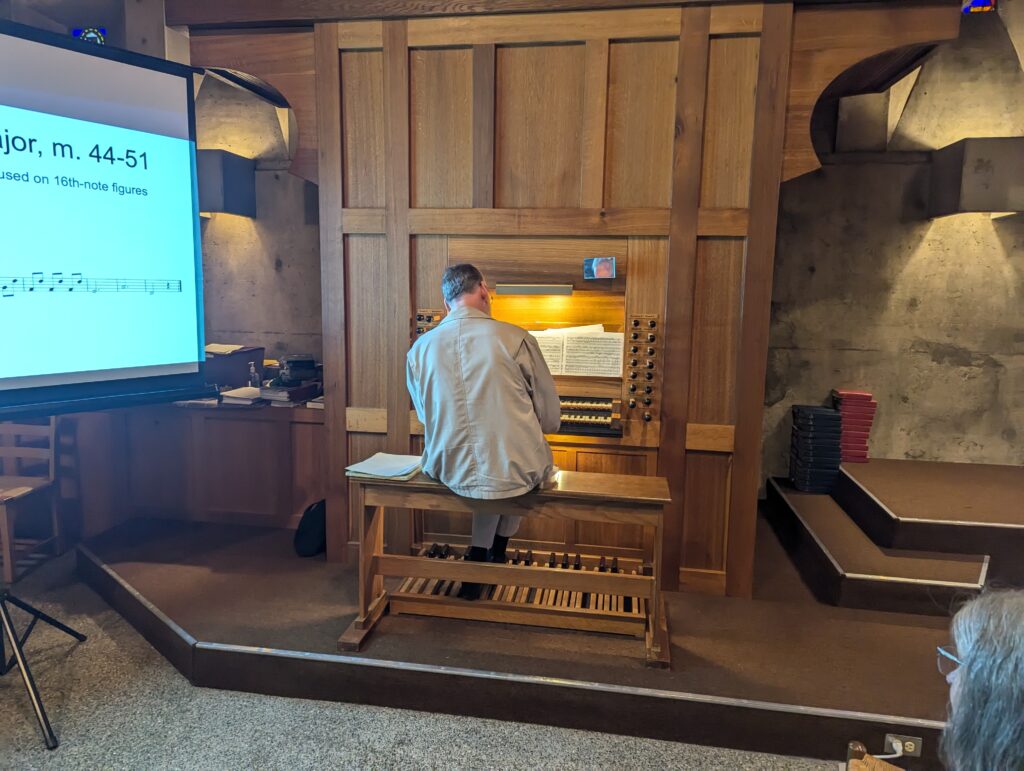
An Organ Renaissance
David opines that all music is either song or dance, and points out that the trend toward one or the other has shifted over the ages, from the songs of the Renaissance to the dances of the Baroque and then to the Romantic period of song. During the 1960s and 1970s, both organ building and performance practice evolved. Organs began to return to the glory of the eighteenth century, with sensitive mechanical action, flexible wind, cases, flat pedalboards, and unequal temperament. In step, performance practice also evolved, bringing new life to music that had suffered so long on electropneumatic organs with distant pipes in chambers connected only by electrical cables.
Enunciated Legato
David describes the result as “enunciated legato,” a style of playing in which one note is fully released before the next one sounds. A novice can get the feel of it by playing a scale with one finger, as Paul Tegels demonstrated. Likewise, in pieces that are dance-like in character, pedal notes should be fully released before the next one sounds. By playing with toes only, the organist can experience a feeling of dancing, and is able to match articulation to the pattern of strong and weak beats in the music.
Pedal Choreography and the “Enunciated Legato” Technique
Using the Eight Little Preludes and Fugues, Dahl emphasized that in order to bring these pieces to life, it is necessary to master the “enunciated legato” technique. This involves creating a slight separation between notes, resulting in a sound that is fluid yet distinct—resembling a strand of pearls knotted with precision. This approach not only brings out the clarity of each note but also enhances the dance-like quality of the music.
To illustrate these concepts, Tegels performed selected passages, his skillful pedal work perfectly embodying the “dancing toes” technique. The demonstration on Christ Episcopal’s Brombaugh organ—a prized instrument known for its craftsmanship and historical accuracy—allowed attendees to fully appreciate the nuances of Dahl’s insights.
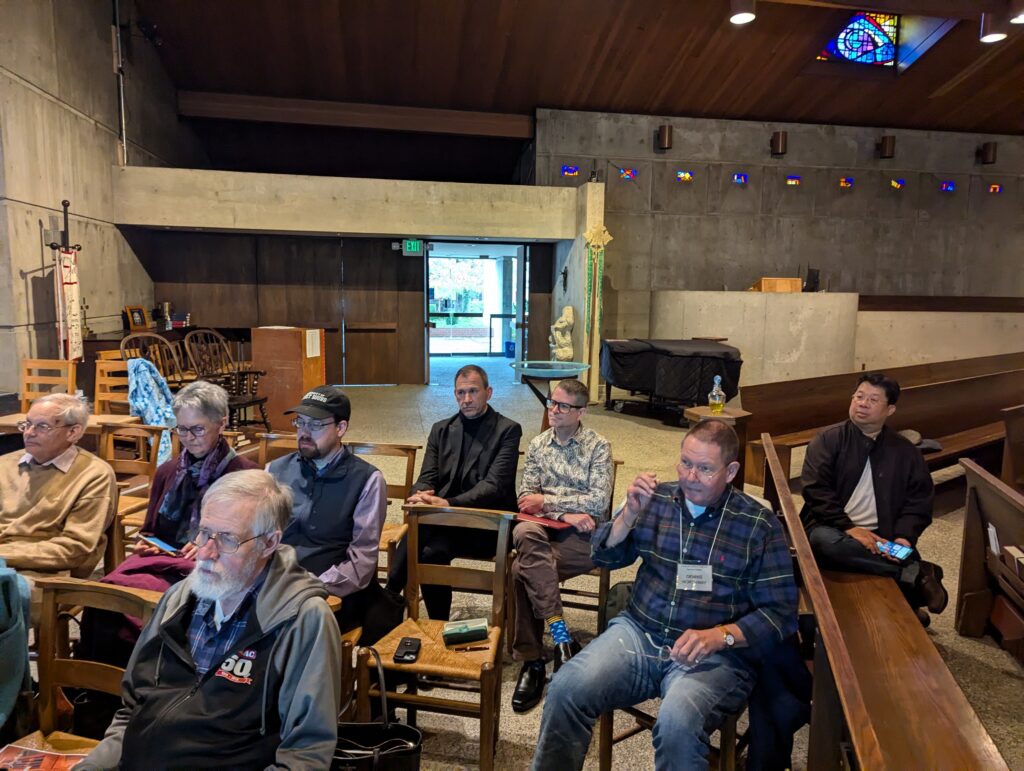
About the Presenters
David Dahl, a widely respected figure in the organist community, is celebrated for his contributions to the American organ tradition as a player, composer and educator. His commitment to historical performance practices has inspired countless organists to approach the organ with a fresh perspective. Paul Tegels, a highly skilled organist and also a retired Professor of Music at Pacific Lutheran University, is known for his expressive interpretations and deep knowledge of Baroque and classical organ repertoire.
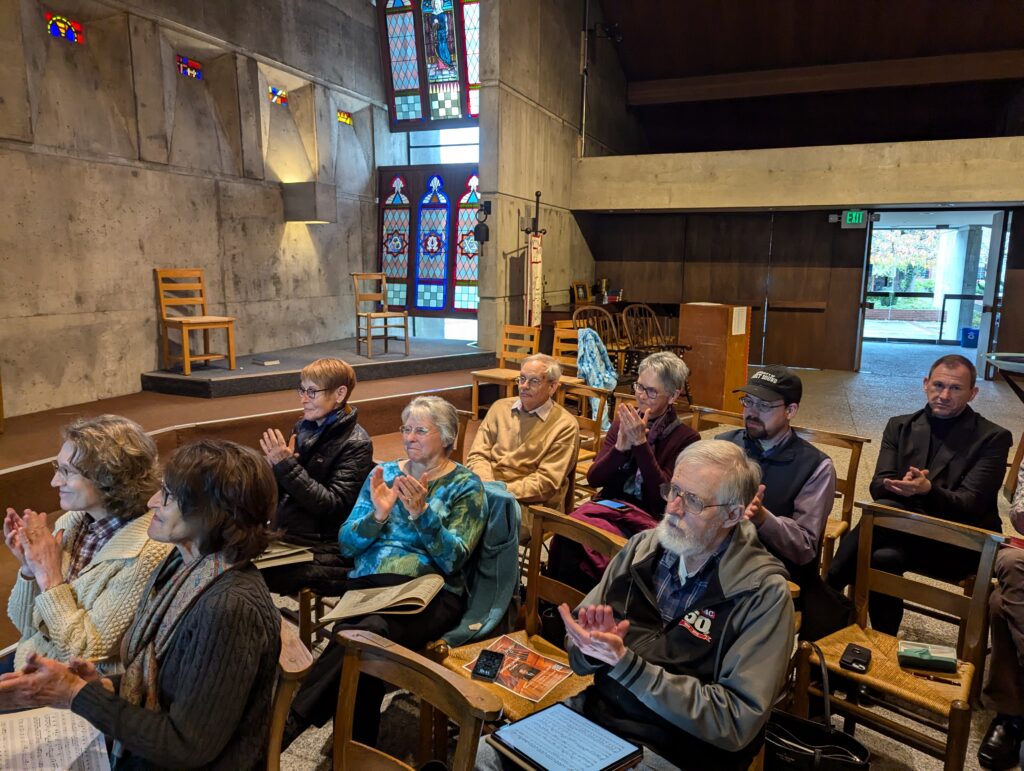
PDF of the Media Presentation
Musical Score used in the Presentation

